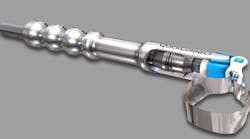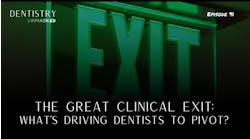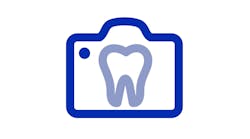I love new technology. Whether it’s a new app or feature on my iPhone or a new device in dentistry, anything bleeding edge, I am drawn to. In my office, we use our iTero to scan every patient, and I use my SprintRay Pro 95 to print any model I need.
Recently I had a patient who broke a tooth on a partial denture. I tried to figure out a way to do a scan, but nothing really worked. I had to break out the alginate and do a pickup impression. The same thing can be true for basic restorative dentistry. I love the contacts and contours I get from sectional matrix systems. However, sometimes I can’t use them and I need a circumferential matrix.
More Pearls:
Akro-Flex Composite Instrument by HuFriedyGroup
In those situations, the QuickConnect Anatomy Band by Rhondium has become my go-to. QuickConnect Anatomy Bands are thin, circumferential matrix bands that do not utilize a Tofflemire retainer. They use their own retaining system with a detachable carrier and adjusting tool that makes for quick and easy placement, tightening, and adjusting. The retaining system is built into each band and is made of lightweight plastic.
The QuickConnect Anatomy Band is attached to the carrier and placed on the tooth. After the band is tightened, the carrier is disengaged, leaving the band and the retaining system. Since the retaining system is lightweight, there isn’t that gravitational pull on the matrix trying to loosen it. It is easily put into place, and it stays there. The retaining system also swivels, so it can be used anywhere in the mouth with ease.
The bands themselves are anatomic and curved, unlike most Tofflemire systems. Posterior teeth have curves and traditional Tofflemire bands leave straight walls. This leaves us struggling for contact and contour. In addition, QuickConnect bands are only 35 microns thick, which makes it easier to get a good contact. The foil of the band is also surprisingly tough. With a little prewedging, it should be easy to get it through any contact onto a tooth.
There are various sizes of the bands as well as two different types, regular and tabbed. The tabs are on the top of the band and allow you to pull on them to create the contour you want around the tooth. Once contoured to where you need it, the tab can be tacked down to the adjacent tooth with a bit of flowable, holding it in place. This is a nice touch that I haven’t seen before. I haven’t always used this feature, but when I have needed it, it’s nice to have.
For my day-to-day direct restorative, I usually choose a sectional matrix. There are just some situations where I can’t use those. Distals of terminal teeth, deep caries gingivally, and caries that wrap around line angles are situations where we can struggle with sectional matrices. The QuickConnect Anatomy Bands by Rhondium are perfect for these situations and many others.
Editor's note: This article appeared in the October 2023 print edition of Dental Economics magazine. Dentists in North America are eligible for a complimentary print subscription. Sign up here.







